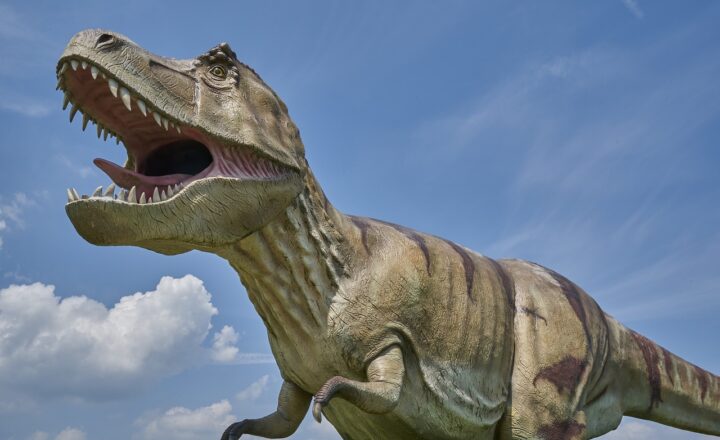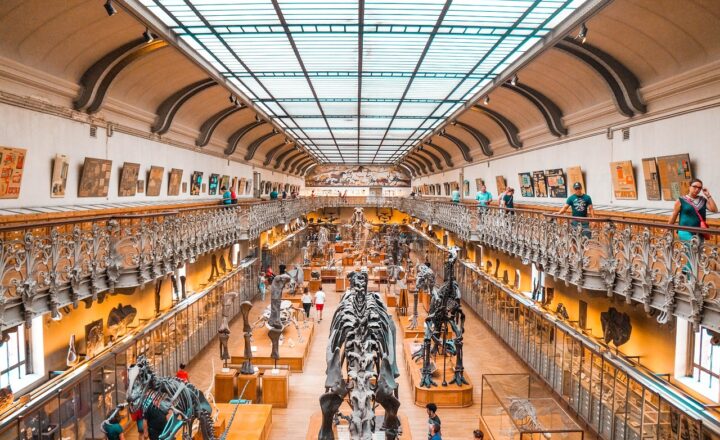The Dinosaur Timeline: Understanding the Different Periods of the Mesozoic Era
November 14, 2024

Dinosaurs have long captured the imagination of people from all walks of life. From their massive sizes to their incredible diversity, these prehistoric creatures ignite curiosity and intrigue. To fully appreciate the origin and evolution of dinosaurs, it’s essential to understand the timeline of the Mesozoic Era, which spanned approximately 180 million years and is often referred to as the “Age of Dinosaurs.” Within this era, the period is divided into three main epochs: the Triassic, Jurassic, and Cretaceous. Each of these periods contributed to the development of various dinosaur species and ecosystems. This article thoroughly explores each of these periods and highlights the key events, dominant dinosaur species, and significant environmental changes that defined the Mesozoic Era.
1. The Triassic Period (252 to 201 million years ago)
The Triassic Period marks the beginning of the Mesozoic Era and is characterized by significant geological and biological changes. At the beginning of this period, the Earth was recovering from the Permian-Triassic extinction event, which wiped out nearly 90% of marine species and 70% of terrestrial species. As ecosystems rebuilt, this period set the stage for the rise of dinosaurs.
The Triassic is divided into three epochs:
- Early Triassic (252 to 247 million years ago): Following the mass extinction, the Earth saw the emergence of small dinosaurs known as the “thecodonts,” which would eventually evolve into true dinosaurs. This epoch is also known for other reptiles like the archosaurs, ancestors of dinosaurs, and various small mammals and amphibians that began to populate land and sea environments.
- Middle Triassic (247 to 237 million years ago): This epoch witnessed an increase in dinosaur diversity. Some of the first true dinosaurs, including the bipedal “Eoraptor” and the larger “Herrerasaurus,” roamed the land, showcasing early adaptations such as bipedal movement and diverse feeding strategies.
- Late Triassic (237 to 201 million years ago): The climate of the Late Triassic became warmer and drier, which favored the evolution of larger dinosaurs. This period witnessed the rise of dominant species, including the first large dinosaurs such as “Plateosaurus.” However, the end of the Triassic also saw another mass extinction event, paving the way for the Jurassic Period.
Understanding the Triassic Period is crucial as it sets the foundation for the beastly giants that would follow. As the first dinosaurs adapted to their environments, they laid the groundwork for the diversity that would flourish in subsequent periods.
2. The Jurassic Period (201 to 145 million years ago)
The Jurassic Period is renowned for some of the largest dinosaurs to ever walk the Earth, including the massive long-necked sauropods and the fearsome carnivores. This period is often associated with a time of increased dinosaur diversity and dominance.
The Jurassic is divided into three epochs:
- Early Jurassic (201 to 174 million years ago): During this time, the first substantial herds of dinosaurs began to emerge. The famed “Brachiosaurus” and “Stegosaurus” were prominent, and the plant life began to diversify, allowing for various herbivorous dinosaurs to thrive. This was also when the first birds, derived from small theropods, began to appear, hinting at the evolution of avian species.
- Middle Jurassic (174 to 163 million years ago): The Middle Jurassic saw further diversification, with the appearance of iconic dinosaurs like “Allosaurus” and “Diplodocus.” The climate was warm and humid with extensive vegetation, supporting large herbivores and their predators. Additionally, the emergence of the first true mammals took place during this epoch.
- Late Jurassic (163 to 145 million years ago): This epoch is often regarded as the golden age of dinosaurs. Massive species such as “Argentinosaurus” roamed the Earth, while formidable carnivores like “Tyrannosaurus rex” emerged. It was a time of evolution and adaptation as dinosaurs filled every ecological niche, resulting in complex ecosystems that varied from lush forests to coastal regions.
The Jurassic Period represents a flourishing era of dinosaur existence, characterized by tremendous evolutionary advancements that shaped the dinosaur lineage leading into the Cretaceous.
3. The Cretaceous Period (145 to 66 million years ago)
The Cretaceous Period is the final and longest segment of the Mesozoic Era. It was during this time that dinosaurs reached their most diverse and widespread forms, exhibiting a variety of adaptations and lifestyle strategies.
The Cretaceous is divided into two primary subdivisions:
- Early Cretaceous (145 to 100 million years ago): This period saw a continuation of dinosaur diversity with popular species such as “Spinosaurus” and “Iguanodon” taking precedence. Flowering plants also began to appear, leading to significant changes in herbivore diets and supporting the evolution of various insect species alongside the dinosaurs.
- Late Cretaceous (100 to 66 million years ago): The Late Cretaceous is famously known for the giants like “Tyrannosaurus rex” and “Triceratops.” However, it also includes the lead-up to the Cretaceous-Paleogene extinction event which marked the abrupt end of the dinosaurs. Evidence suggests that a meteor impact caused climatic disruption, leading to shifts in food chains and ecosystems, resulting in the extinction not only of the non-avian dinosaurs but many other species as well.
The Cretaceous Period highlights the zenith of the dinosaur age but also sets the stage for one of the most significant extinction events in Earth’s history.
Conclusion: Reflections on the Mesozoic Era
The Mesozoic Era, with its fascinating timeline of the Triassic, Jurassic, and Cretaceous periods, underscores the incredible story of dinosaur evolution. Each period plays a distinct role in shaping the vast array of species that once roamed the Earth, from the minuscule to the massive. Through understanding this timeline, we gain insight not only into the dinosaurs themselves but also into the intricate relationships they had with their environments.
The legacy of dinosaurs continues to captivate the minds of scientists, researchers, and everyday enthusiasts alike. By studying these remarkable creatures and the contexts within which they lived, we can unlock clues about the Earth’s biological history and its ever-changing ecosystems. As we continue to explore the mysteries of dinosaur evolution, we are also reminded of the resilience of life and its ability to adapt through changing circumstances over time.







